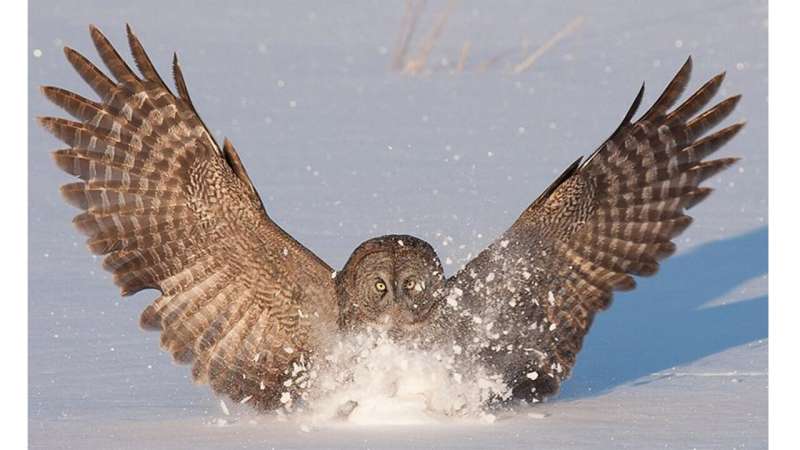Owl wing design reduces aircraft, wind turbine noise pollution

Trailing-edge noise is the dominant source of sound from aeronautical and turbine engines like those in airplanes, drones, and wind turbines. Suppressing this noise pollution is a major environmental goal for some urban areas.
In Physics of Fluids, researchers from Xi'an Jiaotong University used the characteristics of owl wings to inform airfoil design and significantly reduce the trailing-edge noise.
"Nocturnal owls produce about 18 decibels less noise than other birds at similar flight speeds due to their unique wing configuration," said author Xiaomin Liu. "Moreover, when the owl catches prey, the shape of the wings is also constantly changing, so the study of the wing edge configuration during owl flight is of great significance."
Trailing-edge noise is generated when airflow passes along the back of an airfoil. The flow forms a turbulent layer of air along the upper and lower surfaces of the airfoil, and when that layer of air flows back through the trailing edge, it scatters and radiates noise.
Previous studies explored serrated trailing edges, finding that the serrations effectively reduce the noise of rotating machinery. However, the noise reduction was not universal, depending heavily on the final application.
"At present, the blade design of rotating turbomachinery has gradually matured, but the noise reduction technology is still at a bottleneck," said Liu. "The noise reduction capabilities of conventional sawtooth structures are limited, and some new nonsmooth trailing-edge structures need to be proposed and developed to further tap the potential of bionic noise reduction."
The team used noise calculation and analysis software to conduct a series of detailed theoretical studies of simplified airfoils with characteristics reminiscent of owl wings. They applied their findings to suppress the noise of rotating machinery.
Improving the flow conditions around the trailing edge and optimizing the shape of the edge suppressed the noise. Interestingly, asymmetric serrations reduced the noise more than their symmetric counterparts.
Noise reduction varied with different operating conditions, so the scientists emphasized that the airfoil designs should be further evaluated based on the specific application.
For example, wind turbines have complex incoming flow environments, which require a more general noise reduction technology. Examining noise reduction techniques under the influence of different incoming flows would make their conclusions more universal.
The researchers believe their work will serve as an important guide for airfoil design and noise control.
More information: "Aeroacoustic investigation of asymmetric oblique trailing-edge serrations enlightened by owl wings" Physics of Fluids (2022). DOI: 10.1063/5.0076272
Journal information: Physics of Fluids
Provided by American Institute of Physics





















